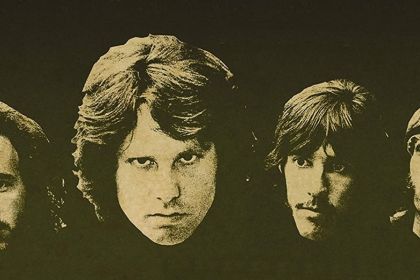SONGWRITER
Tenth Avenue Freeze-Out: nonsensical song title that reveals Springsteen's band origin story

Bruce Springsteen's LP cover
Tenth Avenue Freeze-Out was first released on Bruce Springsteen's breakthrough album Born to Run and remains one of his best-known songs to this day. Although the track never topped the charts upon its 1975 release, it became a popular show opener throughout Springsteen's career, not in the least due to its potential for live improv that greatly extended its duration as heard on the original record.
The choice to kick off his concerts with Tenth Avenue Freeze-Out was not accidental. The song lyrics tell the formation story of the E Street Band, Bruce Springsteen's primary backing ensemble. The third verse specifically mentions that Big Man joined the group, implying the saxophonist Clarence Clemons, whose part undoubtedly contributes to the memorability of the song.
The song title could potentially refer to Tenth Avenue in Belmar, New Jersey, which runs through the E Street that gave the band its name. In turn, the E Street was likely chosen for the band's initial name in connection to early member David Sancious who lived there. Bruce Springsteen later admitted in a documentary that he had no idea what Tenth Avenue Freeze-Out could mean.
Listen to Tenth Avenue Freeze-Out by Bruce Springsteen:
Compositionally, Tenth Avenue Freeze-Out follows the tonal theory and features chord progressions representing the Ionian mode. In the harmonic analysis of the verses' chord chains, the scale degrees (denoted with Roman numerals) show the chord progressions in the key of F major:
- F–Dm–F–Dm–F–Dm–F–Dm or I–vi–I–vi–I–vi–I–vi;
- B♭–Gm–B♭–Gm–F–Dm–F–Dm or IV–ii–IV–ii–I–vi–I–vi;
- C or V;
- B♭–Gm–B♭–Gm or IV–ii–IV–ii.
The progression accompanying the first line of the verse reveals the simple alternation of tonic and submediant chords, a technique found in the opening lines of many popular songs. The same two-chord sequence underlines the phrase "Tenth Avenue freeze-out" in the refrain.
The second line features the so-called harmonic sequence in which a certain musical turnaround is repeated in a modified form with different scale degrees. Here the segment of the sequence is formed by two chords, I–vi, whose roots are spaced from one another by the musical interval of a minor third. This segment is repeated at the fourth (IV–ii) degree of the Ionian diatonic scale.
The third line switches to the sole C dominant chord, creating a considerable harmonic contrast that—together with the two-chord fourth line—generates tension, which is then resolved by the F tonic chord at the beginning of the refrain.
Discover more songs composed in Ionian major mode and check out their harmonic analysis in the following articles:
- 6 songs to unpack Ionian mode and the major scale
- 9 Beatles songs that combine harmonic major with Ionian mode
- Longfellow Serenade and the fireside poet that kindled Neil Diamond's song
- Wildwood Weed: the cheeky ganja farmers song that got banned
- Sugaree: Jerry Garcia's song referencing his lyricist's criminal past
- D'yer Mak'er: meaning of Led Zeppelin's most controversial song
- Seven Seas of Rhye: song of imaginary land brought to life by Ionian and Mixolydian modes
- Coal Miner's Daughter was forced to remove a third of the lyrics from her autobiographical song
- I Wanna Be Sedated: pure classical harmony cementing the Ramones' hit in punk rock history
- Hasta Mañana: the origins of the best ABBA ballad



